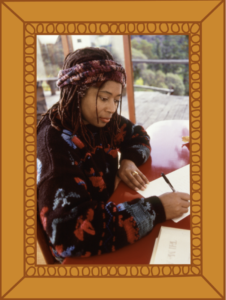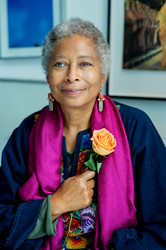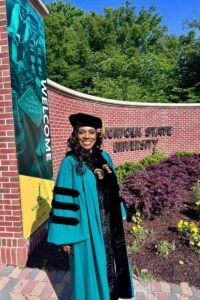By Salamishah Tillet, originally published in Oprah Daily.
One time in 1980, a 36-year-old Alice Walker posed this question in her journal: “My God, what do black women writers want?”
Walker’s answer was emphatic, as she wrote in her dark blue spiral notebook: “We want freedom. Freedom to be ourselves. To write the unwritable. To say the unsayable. To think the unthinkable.” Boldly concluding, “To dare to engage the world in a conversation it has not had before.”
As a Black woman writer who has read almost every novel, poem, essay, or short story Walker has ever published, I found this entry in the new book Gathering Blossoms Under Fire: The Journals of Alice Walker, 1965–2000, remarkable for its ambition and radical honesty.
Writing this three years before receiving the National Book Award and making history by becoming the first Black woman to win the Pulitzer Prize in Fiction for The Color Purple, Walker had envisioned freedom—personal, professional, and political—that was unimaginable to generations of Black writers, and to Black women generally, before her. By doing so, she made a new blueprint for herself, and for those of us who have turned to her ideas and words as inspiration, even if we did not have access to her innermost thoughts until now.
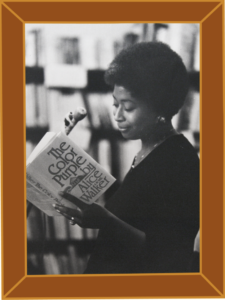
I first read The Color Purple when I was 15 and had an immediate connection with Walker’s Black women characters, particularly Celie, Shug, and the ever-so-defiant Sofia. At the time, it wasn’t that I identified with their story arcs or the setting of Georgia in the early 1900s. Instead, I was mesmerized by Celie’s letters to God, as well as those between her and her sister Nettie, making it perhaps the first African American epistolatory novel. This technique enabled Walker to create a closeness between herself and her readers, a trust that was essential for us to not only have empathy for Celie’s struggle but also believe that her journey to self and escape from violence was possible. Though I did not know that when I first read the book I desperately needed Celie’s healing as a salve to help me recover from my own experiences with sexual assault. And as I detailed in my own book, In Search of The Color Purple: The Story of an American Masterpiece, I’ve repeatedly turned to the novel—as a teenager, then as a teacher, and now as a critic—again and again finding new meanings, and models for my feminism. And now as I read her journals, I can see her own self-discovery informed her arc and, in turn, those of her beloved characters.
Walker received her first journal—a travel diary—as a gift from her Spelman College classmate Cecile Ganpatsingh before Walker’s trip to Europe, traveling by air and out of the country for the first time. The brown faux-leather daybook had a gold border and embossed lettering that read my trip. During her time in Helsinki, Glasgow, Amsterdam, and Hamburg, the 18-year-old Walker—whose main journeys until this time were from her rural hometown of Eatonton, Georgia, to Atlanta, and once to visit family in Cleveland—wrote daily about her adventures, and unknown to her at the time, for posterity.
At the end of the trip in late August 1962, she wrote, “Although I was only in Europe for about a month I know that my life will be different because of it.” Reflecting on the growing crisis between Russia, Cuba, and the United States, Walker confided, “Most of all, I’ve learned that there is so much difference between the people and their governments that one cannot any longer hate indiscriminately.”
Her epiphany was far-reaching, equally transforming Walker’s worldview and her relationship to writing. From that time, and during her tenure as a student at the predominantly white college Sarah Lawrence, she also saw journaling as a unique exercise that helped her notoriously bad memory recall “conversations, psychic discoveries, and journeys of all kinds.”
Read the full review on Oprah Daily. 